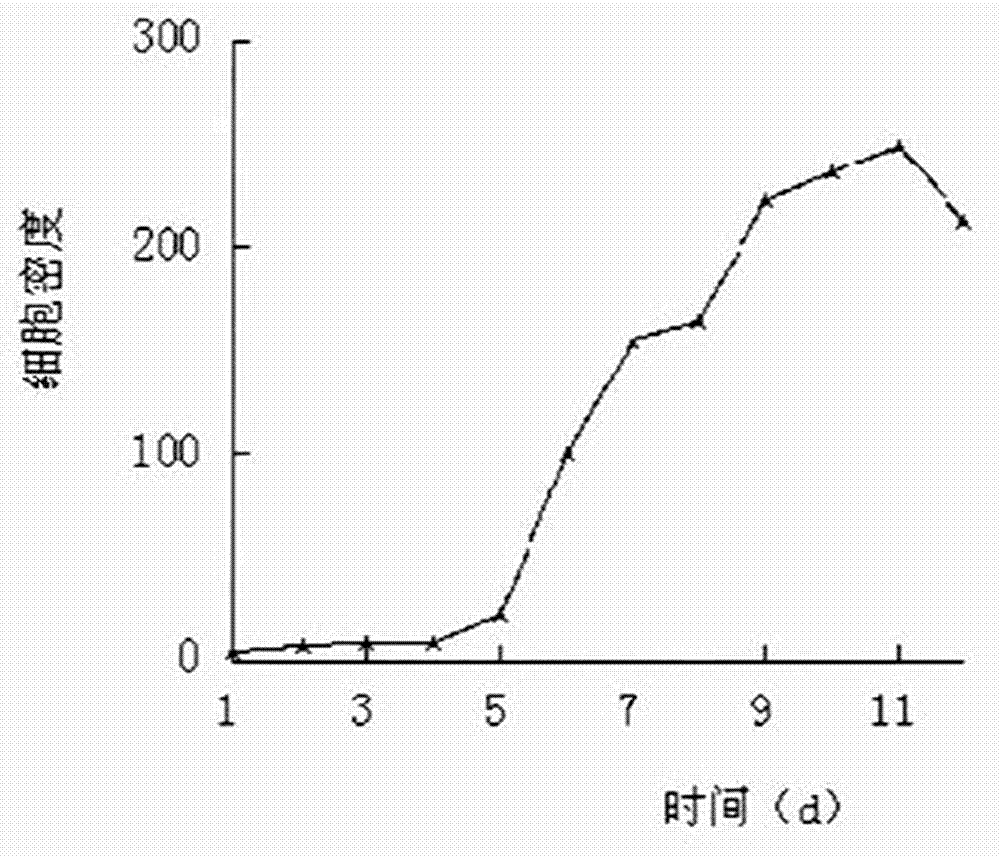Method for increasing content of arachidonic acid in porphyridium
A technology of arachidonic acid and porphyridium, applied in the direction of microorganism-based methods, biochemical equipment and methods, microorganisms, etc., can solve problems such as high cost, slow growth, and poor product quality
- Summary
- Abstract
- Description
- Claims
- Application Information
AI Technical Summary
Problems solved by technology
Method used
Image
Examples
Embodiment Construction
[0013] Preparation of the culture medium in step 1. The composition of the culture medium: 1000 parts of boiled and cooled seawater, 3 parts of sodium nitrate, 1 part of urea, 1.5 parts of ammonium chloride, 1.5 parts of potassium dihydrogen phosphate, 2 parts of ammonium bicarbonate, and 0.01 parts of ferrous sulfate servings, vitamin B 1 0.02 parts, vitamin B 12 0.001 part, 0.004 part of biotin, 0.003 part of nicotinic acid, 0.001 part of α-naphthaleneacetic acid, 0.2 part of magnesium sulfate, Na 2 0.002 parts of EDTA. Take 2000 ml of this culture solution and put it into a 3000 ml Erlenmeyer flask, seal it with plastic wrap and a rubber band, shake it on a shaker for 15 minutes, and put it into a 4°C refrigerator for future use.
[0014] Step 2, inoculation and cultivation Get a clean Erlenmeyer flask of 1500 milliliters, pack 600 milliliters of the culture solution described in step 1, get vigorous growth, pollution-free, Porphyridium algae inoculation in the exponentia...
PUM
| Property | Measurement | Unit |
|---|---|---|
| diameter | aaaaa | aaaaa |
Abstract
Description
Claims
Application Information
 Login to View More
Login to View More - R&D
- Intellectual Property
- Life Sciences
- Materials
- Tech Scout
- Unparalleled Data Quality
- Higher Quality Content
- 60% Fewer Hallucinations
Browse by: Latest US Patents, China's latest patents, Technical Efficacy Thesaurus, Application Domain, Technology Topic, Popular Technical Reports.
© 2025 PatSnap. All rights reserved.Legal|Privacy policy|Modern Slavery Act Transparency Statement|Sitemap|About US| Contact US: help@patsnap.com


